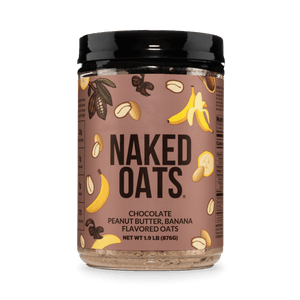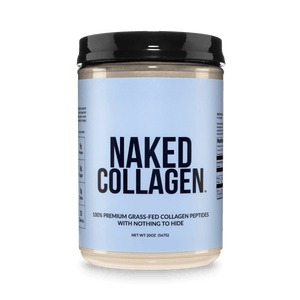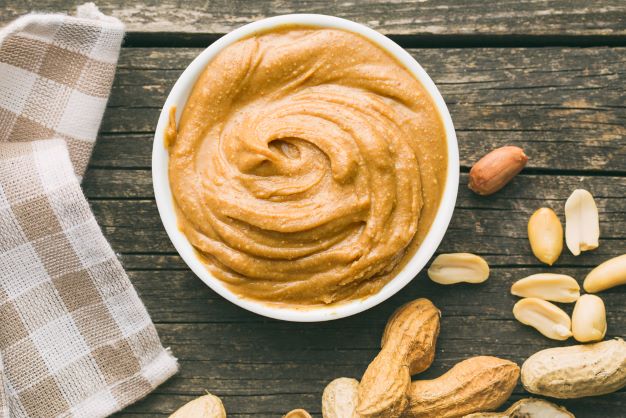You may have heard of “complete proteins” and wondered if that needs to be on your radar.
It’s true that while all dietary proteins have their own benefits, they’re not all created equal.
For example, plant-derived proteins have a long list of health benefits, but naturally contain fewer essential amino acids than animal proteins do.
For example, Naked PB is a low-calorie, protein-rich supplement that serves as a satisfying snack to support your weight loss goals. It’s also a good source of magnesium, which supports muscle and nerve function.
However, Naked PB is an incomplete protein - which means that on its own, it’s missing some of the amino acids you need to fuel muscle building.
That’s where complete (and complementary) proteins come in.
We’ll walk you through what these terms mean - both in science and in practice - and how you can use these concepts to maximize your nutrition and fitness.
What is a Complete Protein - and Why It Matters

A complete protein is a protein that contains all 9 essential amino acids (source). While 20 total amino acids exist, the body cannot synthesize the “essential” amino acids on its own. Instead, they have to come from your diet.
Amino acids serve as the building blocks for proteins both in our diets (from plant and animal sources) and in our bodies. To synthesize new muscle protein in your own body, it’s necessary to have a plentiful amount of essential amino acids from the protein you eat.
If you’re an athlete - whether you’re passionate about lifting, endurance, mobility, or a combination thereof - your protein needs are higher than the average person’s (source).
Not only do you need a sufficient amount of total protein, but you need the full array of amino acids from these proteins to help your body build.
If you're not sure how much protein you really need, check out our protein calculator.
Where to Find Complete Proteins

The most straightforward way to get complete proteins is to turn to animal sources.
Animal proteins (from meat, eggs, and dairy) are nearly always complete proteins. In other words, they are rich in all essential amino acids.
But if you’re on a plant-based diet, there are still plenty of ways to still get all of the amino acids you need.
You can still achieve all of the amino acids you need by choosing a strategic variety of protein rich foods or supplements.
Combining two incomplete proteins that together offer all 9 essential amino acids is called a complementary protein.
Take note that you technically don’t need to eat two incomplete proteins within the same meal to receive the benefits of complementary protein. Eating a balance of plant proteins throughout the entire day will still provide the same amino acid spectrum to support muscle-maintenance.
However, structuring your meals with complementary proteins in mind can be a helpful conceptual reminder.
Complementary Pairings with Naked PB
Our powdered peanut butter harnesses the power of peanuts to deliver tasty, nutrient-dense protein. But like other legumes, peanuts are naturally lower in the sulphur-containing amino acids, like methionine and cysteine (source).
To make your amino acid intake more balanced, we’ve included some easy ideas for complementary protein pairings.
Check out these combinations for enjoying our fan-favorite Naked PB powder with other nutritious ingredients:
Naked PB + Naked Rice
When it comes to making complementary proteins, legumes and grains are a match made in heaven.
That means your nostalgic peanut butter sandwich habit may be more nutritious than you think!
Legumes and nuts are relatively low in the amino acid methionine, and grains are low in the amino acid lysine. Together, these two food groups help fill in each other’s deficiencies.
For a vegan smoothie that supports muscle synthesis, include both Naked PB and Naked Rice powders along with your other favorite smoothie ingredients. Using 1 scoop of each powder offers about 18 g of protein plus a more well-rounded amino acid profile.
Naked PB + Oats

As we just mentioned, eating grains and nuts together typically makes a complementary protein. Combining Naked PB with oats is another way to achieve this muscle-building balance. Like other grains, oats contain relatively lower amounts of lysine and threonine (source), but Naked PB supplies those amino acids in greater amounts.
Powdered peanut butter and oats can be paired in numerous ways. Try stirring Naked PB into cooked oatmeal for a protein-rich hot breakfast or enjoy this combo cold as overnight oats. You can also use oat flour and add Naked PB next time you whip up gluten-free baked goods.
Naked PB + Naked Egg
This pairing isn’t technically a “complementary protein” because it’s not two incomplete proteins - egg white proteins are a complete protein on their own. Nonetheless, the combo of peanut and egg white protein is an easy vegetarian way to fill in amino acid gaps.
Egg whites are naturally rich in protein, including all 9 essential amino acids. Using our egg-white protein powder (which packs in 25 grams of protein and 5.8 g branched chain amino acids per serving) means you can harness the power of eggs on the go, without the hassle of a frying pan or spatula.
Try Naked PB and Naked Egg together next time you whip up pancakes, waffles, or muffins. You can use Naked Egg as an egg substitution (we’ll walk you through the process here), plus add powdered PB to replace some of the flour.

Key takeaways
If your diet is heavily plant-based, it’s smart to vary your dietary protein sources to provide the full spectrum of amino acids.
By doing so, you’ll be fueling your body with the chemical building blocks it needs to both build and maintain muscle mass. While plant proteins are typically incomplete on their own, eating them in complementary pairs helps complete the equation.















